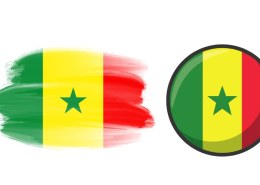Senegal is a country with a rich history, and its journey to independence is a significant part of its story. If you’re curious about when Senegal gained its independence, you’re in the right place! In this blog post, we’ll explore the important date when Senegal became a fully sovereign nation and discuss the historical context of its independence.
Senegal’s Independence: The Date That Changed History
Senegal gained its independence from France on April 4, 1960. This date marks the moment when Senegal officially became an independent republic, ending its status as a French colony. The struggle for independence was part of a broader wave of decolonization that took place across Africa in the 20th century.
Historical Background: Senegal Under French Rule
Before gaining independence, Senegal had been a French colony for many years. It was one of the earliest territories in West Africa to be colonized by the French in the 17th century. Over time, Senegal became an important part of the French colonial empire, with its capital, Dakar, serving as a key hub for French activity in the region.
By the mid-20th century, many African nations, including Senegal, began to push for independence. The rise of nationalist movements and the weakening of colonial powers led to significant political changes.
The Road to Independence
Senegal’s independence was achieved relatively peacefully compared to some other African nations. One of the main figures in Senegal’s path to freedom was Léopold Sédar Senghor, a prominent intellectual, poet, and politician. Senghor played a key role in the nationalist movement and would go on to become the first president of Senegal after its independence.
On April 4, 1960, Senegal, along with several other African nations, gained independence from France as part of a broader movement that saw 14 French African colonies break away. This day is now celebrated every year in Senegal as Independence Day and is a major national holiday.
The Impact of Independence
Senegal’s independence marked the beginning of a new era for the country. As an independent republic, Senegal was able to chart its own course politically, economically, and culturally. Under the leadership of Senghor and other political figures, Senegal pursued policies of modernization and cultural development, while maintaining strong ties with France and other nations.
Independence also set the stage for Senegal to become a beacon of stability and democratic governance in the region, often serving as an example of peaceful transitions of power.
In conclusion, Senegal gained its independence from France on April 4, 1960. This historic day marked the end of colonial rule and the beginning of a new chapter for Senegal as a sovereign nation. The country’s path to independence was shaped by the dedication of leaders like Léopold Sédar Senghor and the broader wave of decolonization across Africa.
Senegal’s journey toward independence is a reminder of the power of determination and the desire for self-determination that shaped much of the 20th century. Do you know any other interesting facts about Senegal’s independence or history? Feel free to share your thoughts in the comments below!

